Wandering Around Out There With A Canoe On My Head
Wandering Around Out There With A Canoe On My Head
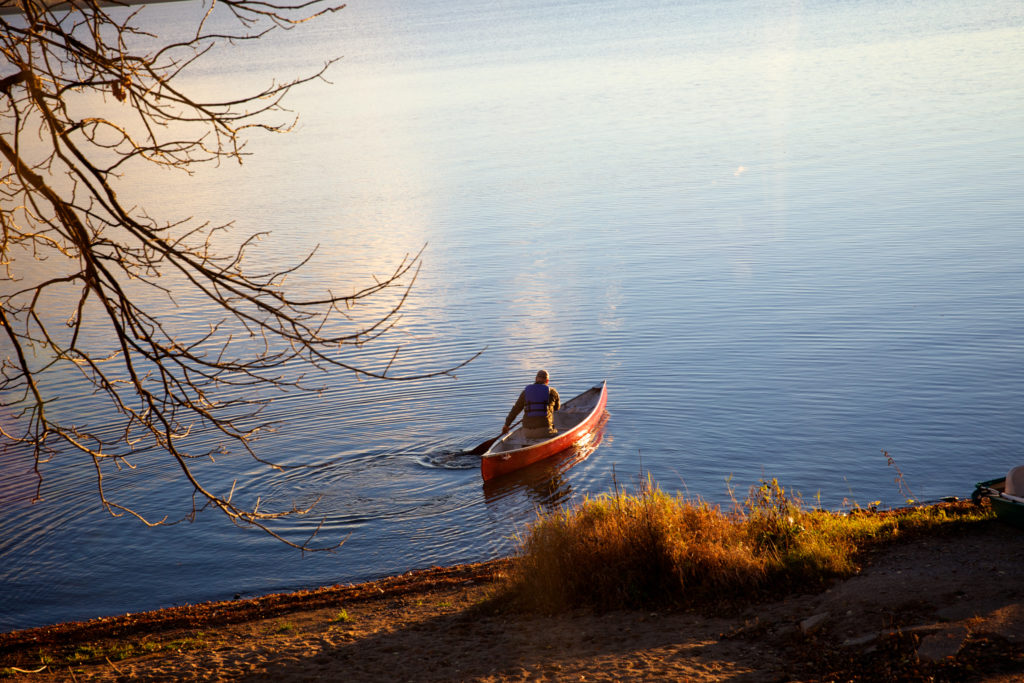
Paddling by yourself in a canoe meant for two can be relatively easy on a flat lake on a calm day, but when doing so in less than ideal conditions, here are a few tricks to help make life a lot easier.
Turn the boat around
Instinctively, you may just sit in the stern (back) seat and paddle away. Nothing wrong with that of course. It’s nice and comfortable for a relaxing paddle. However, without a second person’s weight to push down the bow (front), you’ll notice rather quickly that your canoe was designed to work best when it sits in the water flat (gunnels parallel to the water). The bow will easily catch wind, and with the bottom of the boat not in the water completely, your canoe will turn very easily, and not necessarily in the direction you want to go. The most simple trick is to sit in the bow seat (with you facing the stern of course). Because of the way the seats are laid out, you and your weight will be closer to the center of the boat, keeping it more flat on the water.
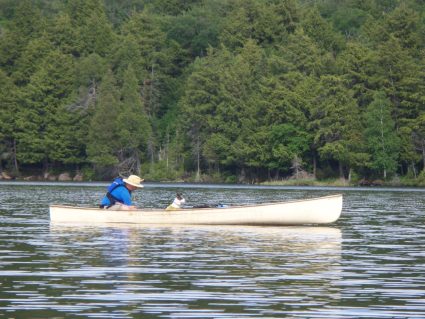
Gain a few pounds in the right places
“Trimming” the boat is a term that refers to getting the canoe as flat as possible by either adding or shifting the weight inside, for better “tracking” (moving through the water optimally). Many canoeists will add rocks or sticks in the bow to compensate for big differences in the weight of canoe partners (*This can be a bit of a touchy subject. Be gentle. A little bit of an angle is not worth the awkwardness of assessing people’s weights in front of everybody). Also, some canoes, like mine, are designed to carry a lot of weight, with less than optimum tracking happening when the canoe isn’t filled. Obviously both these issues can be a big problem with only one person. Another advantage of portaging is that you have gear with you, and rather than dirtying up your boat and trying to find a rock when you need it you can just adjust the packs and bags further towards the end that’s raising out of the water (*And when paddling with partners, this can be done with more subtlety than the loud judgmental klunk of rocks).
Get weight from nowhere
Here’s a pro tip: You know those dry bags that keep water out? They also keep water in. Rolled up they weigh very little and take up little space. But opened up and filled with water they can be quite heavy. They’re usually the perfect shape to sit right at the tip of the boat, and so perfect for trimming the canoe. The best part is, if you’re portaging, you just dump the water out and fill it again on the other side. So pack an extra along with you when you’re paddling solo.
Get Down
So turning the boat around didn’t do the trick, you forgot your dry bag and you can’t find any rocks? Another thing you can try is moving a little more towards the center of the boat. The first thing you can try is to kneel on your seat instead of sitting on top of it – if you don’t already do that. If you’re not used to it, it can be a little tough on your knees. Some fancy canoes have kneeling pads which help, but if yours doesn’t, try using a rolled up towel or sweater. I bring along one of those stadium seats on a lot of trips. It’s multi-use in that it can act as a kneeling pad, a small sleeping pad and when attached right to my barrel pack, a pocket for more storage. (Oh, and a camp chair, I guess, but Nancy usually steals it on me for that.)
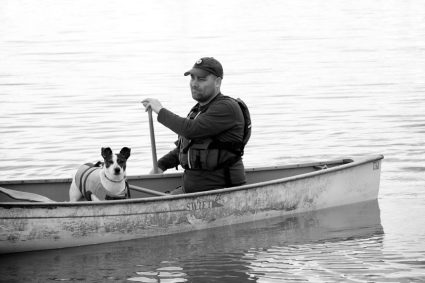
For best results, you’ll want your to have the edge of the seat positioned near the middle of your butt, with your knees on the bottom of the canoe. Then try to shift a little so that your weight is equally distributed between your knees and butt. (Lucky folk will have canoes with angled seats for just this purpose, but that won’t leave that line from the edge of the seat on your bum. I mean, you might be swimming later.) This will push you a little further forward, but not all that much. Combined with the next two points though, things will get easier.
Get Up
If you’re still not far enough up the canoe, you can get your bum completely off the seat and move closer to the center. This takes some getting used to for some of us, because all your weight will either be on your knees, or pushing down on your folded legs. If you’re in a bigger boat (usually bigger than 16′) this will probably be essential without weighing down the canoe. But usually the bigger canoes have a back thwart that you can use to lean on like you would the seat. (Just don’t put all your weight down on it. They’re not meant to be sat on top of.)
Get sideways (kind of)
So since you’re up close to the center of the canoe, and your kneeling, why not take the next step for best control of a solo canoe and lean it a little to your paddling side. This might seem counter intuitive if you’ve never seen or done it, but when paddling alone you’ll actually find it much easier with the canoe on the side, or what your canoe instructor calls “keeling”. Your best bet for this technique is to shift your knees slightly towards your paddling side to tip the canoe ever-so-slightly and get comfortable. If you think you can lean a little more, try shifting a little again or as many times as necessary to get you into a comfortable leaning canoe. Obvsiously you don’t want the gunnels too close to the water that it starts to get into the canoe, so consider the water and wind conditions. Better yet, take a canoe paddling class and get your technique down with advise and feedback from an instructor.
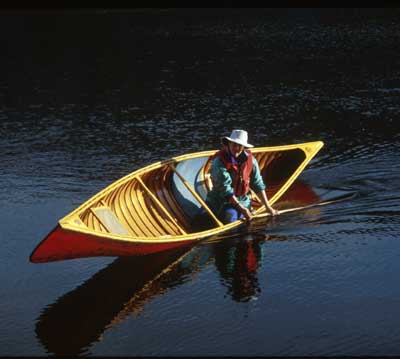
Another great idea: Check out Becky Mason’s latest DVD “Advanced Classic Solo Canoeing“. This great instructional video offers some advanced paddling techniques which Becky shows off with grace and ease, but the DVD also comes with more basic instruction of her original “Classic Solo Canoeing” movie to get you started
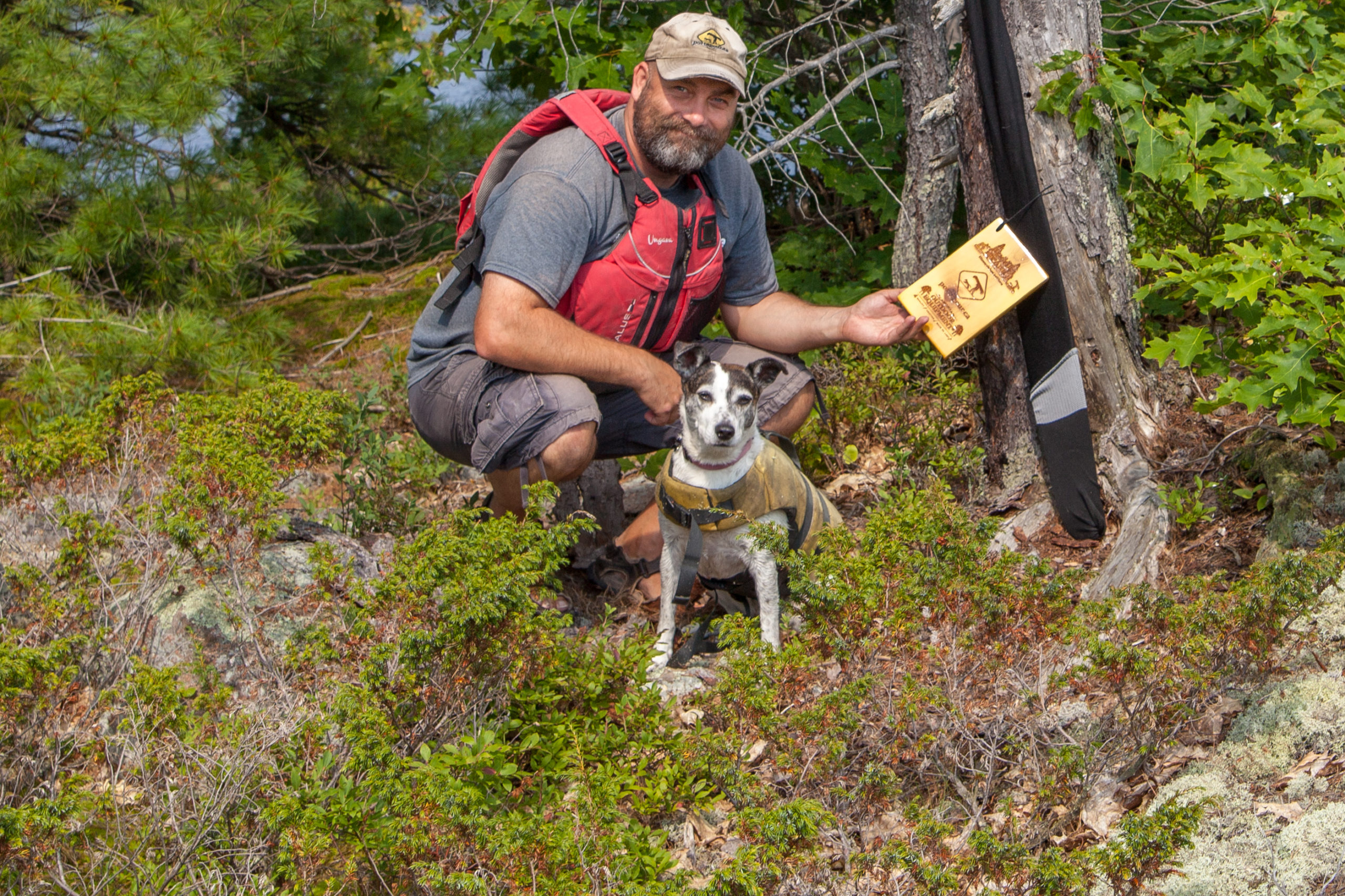
Session expired
Please log in again. The login page will open in a new tab. After logging in you can close it and return to this page.
I was reading this article to get some tips for paddling a canoe solo, which I am not very good at even in flat water. However what I loved most was the tip about using the dry bags filled with water to add extra weight. I kayak more than I canoe and the dry bag tip is definitely something I can use while paddling a tandem kayak solo as well. Also loved the tip about leaning the canoe a bit sideways. I will practice that and hopefully not fall in the water. A.
Thanks, Ali! Yes, the dry bags are a much better option than rocks or sticks (they never seem to work out anyway). Tipping the canoe may seem counter-intuitive but once you do it you’ll see what I mean, and falling in isn’t as inevitable as it seems. If you do fall in, you won’t be the first person. I’ve done that. Lots of times. 🙂
Just go get a 100 lbs dog. That will do the trick.
Hope it works out, Jeff.
Hi! I’ve been reading your website for some time now and finally got the bravery to go ahead and give you a shout out from Austin Tx! Just wanted to mention keep up the fantastic job!
Hi! I had to leave you a comment since your post saved my weekend.
On my last canoe trip with my partner I spent some time solo paddling and after an hour felt I had gotten the hang of it. After that trip I felt confident enough to start planning my first solo trip. A few weeks later, after renting a car, canoe and booking a day off work I rolled up to the lake excited to start my adventure. There was just one problem, a heavy head wind was blowing opposite the direction I intended to go.
I started out and immediately recognized I was in trouble. I had no ability to steer the boat. Once the wind got hold of it I was turned sideways and heading back to shore. Paddling with all my might only served to propel me perpendicular to my intended direction of travel. It must have been pretty amusing to watch me struggle just to get out of the bay. After what felt like thirty minutes of paddling I could still see my car in plain view.
I started experimenting with my body position, moving towards the centre of the canoe. At one point I deduced I might be able to paddle the boat from the front seat facing the bow, with the rest of the canoe dragging behind me. I set out to test this hypothesis by spinning around in my seat, a manoeuvre that ended with me in the water, frantically swimming after my canoe which was now drifting back towards the car.
I caught up with the canoe and towed it to the river bank where I did some serious reflection on the situations my over inflated ego seemed to get me into. Then I pulled my phone out of my dry bag and googled “tips for paddling solo canoe in windy conditions” and this post came up.
You saved my weekend!
I set up the canoe so I could paddle it from the bow seat facing the stern and filled a dry sack with water and put it at the extreme end of the canoe. I keeled the canoe to my paddling side and set off again. What a difference!
It still took a good amount of effort but at last I was making headway and was able to prevent the wind from blowing me too far off course.
I had a wonderful weekend and a hilarious story to go along with it, and this blog post to thank!
Keep up the great work and wonderful writing.
That’s awesome! Really makes me feel good about writing the article. I’ve been there, many times, and I can totally relate to how you must of felt while standing on shore, wet and exhausted. (I’m thinking of a few specific times as I type this.)
The best stories always go like this, bonus for having a happy ending. 🙂 Thanks so much for sharing. It made my day.
we are more into kayaks, but what Becky Mason is doing with her canoe, is really impressive 🙂
She’s pretty amazing. 🙂
I like the picture with the dog and paddler. That is pretty cool.
Thanks!
Those tandem canoes are pretty long. It must take some skill to maneuver those effectively solo.
The white (champagne) one is very long (18+ft), and really not meant to be paddled solo. So you’re right, it does take some skill, but a lot more effort. 🙂